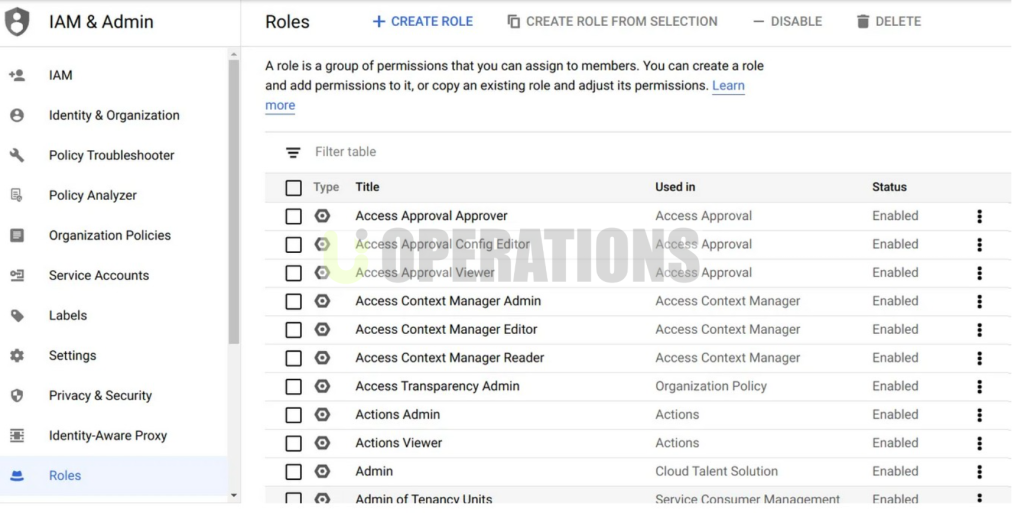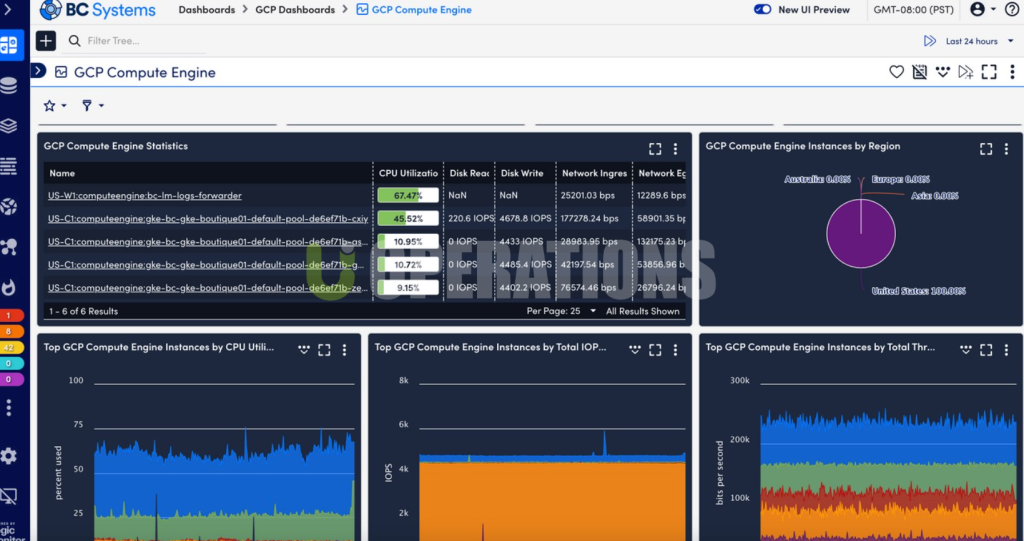Portfolio Details
GCP Infrastructure Best Practices and Security Assessment
Price: 1450$
Duration: 2 Weeks
01
Project Overview
Our client engaged us to conduct a thorough assessment of their Google Cloud Platform (GCP) infrastructure to ensure it follows best practices and is secure, scalable, and optimized for performance. The goal of this project was to evaluate the existing cloud architecture, identify security vulnerabilities, and provide actionable recommendations for improvement. Through a detailed review of GCP resources, configurations, and security controls, we ensured the client’s cloud environment adhered to GCP’s best practices while meeting their business, security, and compliance requirements.
02
Project Objectives
The main objectives for this project were:
- Security Assessment:Assess the current security posture of the client’s GCP environment to identify vulnerabilities, misconfigurations, and areas requiring improvement.
- Best Practices Alignment:Align the GCP infrastructure with Google’s recommended best practices, including performance, security, cost management, and scalability.
- Compliance Evaluation:Ensure that the GCP infrastructure meets relevant regulatory and industry standards, such as GDPR, HIPAA, PCI-DSS, and others.
- Operational Efficiency:Improve the infrastructure’s operational efficiency through better monitoring, automation, and cost optimization techniques.
- Risk Mitigation:Address any identified risks, implement proactive measures, and ensure that the environment is resilient against threats.
03
Pre-Deployment Planning
Site Survey & Requirements Gathering:
- Current GCP Architecture Review:We began by evaluating the client’s existing GCP setup, including their VPC, IAM policies, Cloud Storage configurations, Compute Engine instances, and networking setup. This helped us identify areas that required optimization or adjustment.
- Stakeholder Collaboration:We worked closely with the client’s cloud and security teams to understand specific challenges, business needs, and compliance requirements.
- Scope Definition:The scope of the assessment covered key areas, including identity and access management (IAM), network configurations, storage, security controls, compliance, monitoring, and performance optimization.
Assessment Methodology:
- Security Posture Evaluation:We used tools like Google Cloud Security Command Center (SCC), Cloud Security Scanner, and third-party vulnerability scanning tools to evaluate the security configuration.
- Compliance Checks:We checked the environment for compliance with industry standards such as GDPR, HIPAA, PCI-DSS, etc., ensuring that data privacy and protection were prioritized.
- Cost Optimization Review:The assessment also aimed to identify areas where the client could reduce costs through resource optimization, such as identifying over-provisioned instances or underutilized resources.
04
Deployment
Step 1: Security Assessment and Risk Mitigation
- Identity and Access Management (IAM):We thoroughly reviewed the client’s IAM policies to ensure the principle of least privilege was enforced. We verified roles and permissions, and recommended adjustments to enforce tighter access controls and better separation of duties.
- VPC & Network Security:We assessed the configuration of Virtual Private Clouds (VPC), subnets, and firewall rules. We ensured that the networking environment was properly segmented and that public-facing services were secured.
- Data Protection and Encryption:We ensured that data was encrypted both in transit and at rest. We reviewed the use of Cloud KMS (Key Management Service) for data encryption and configured appropriate storage encryption settings for Google Cloud Storage and Compute Engine.
- Logging and Monitoring:We ensured that Google Cloud’s operations suite (formerly Stackdriver) was set up for centralized logging, monitoring, and alerting. Cloud Audit Logs, Cloud Monitoring, and Cloud Logging were configured to monitor key events, with alerts for suspicious activity.
- Incident Response Setup:We reviewed or implemented an incident response plan, ensuring automated responses to detected threats using Cloud Functions or third-party integrations where appropriate.




Step 2: Best Practices Alignment
- Google Cloud Architecture Framework:We assessed the client’s infrastructure against Google’s Cloud Architecture Framework to ensure that the environment aligned with the following key pillars:
- Security:Strengthened controls around IAM, data protection, and network security.
- Scalability:Ensured that resources could be scaled up or down easily based on demand, using Google Cloud’s Auto Scaling and Managed Instance Groups.
- Cost Optimization:We implemented cost management practices by using Google Cloud’s built-in cost controls and recommended actions such as the use of Preemptible VMs, committed use contracts, and right-sizing resources.
- Performance Efficiency:We identified any over-provisioned resources and helped optimize performance through resource right-sizing and leveraging GCP’s managed services, such as Google Kubernetes Engine (GKE) and Google Cloud SQL.
- Operational Excellence:We ensured that monitoring, logging, and alerting were in place to proactively detect issues and maintain the health of the environment.
Step 3: Risk Mitigation and Remediation
- Misconfigurations Fix:We addressed any identified misconfigurations or vulnerabilities within the infrastructure. This included ensuring that resources like Cloud Storage buckets had proper access controls, and that firewall rules were appropriately restrictive.
- Security Best Practices Implementation:We implemented best practices such as multi-factor authentication (MFA) for all users, proper API key management, and periodic security assessments to reduce the risk of exposure to threats.
- Compliance Remediation:We helped ensure that the client’s GCP setup complied with regulatory requirements by enabling features such as data retention policies, logging, and data encryption for compliance with GDPR, HIPAA, and other industry-specific standards.
Step 4: Testing & Validation
- Vulnerability Assessment:We performed a vulnerability assessment using Google Cloud’s security tools and third-party tools to scan for weaknesses and potential attack vectors.
- Penetration Testing:We conducted a targeted penetration test on specific components of the GCP environment to simulate potential threats and test the effectiveness of security measures.
- Compliance Auditing:We conducted a compliance audit to verify that the necessary controls were in place to meet the required industry standards, and that audit logs were being generated for transparency and accountability.
05
Post-Deployment and Optimization
Monitoring and Ongoing Security Enhancements:
- Continuous Monitoring:We implemented continuous monitoring with Google Cloud Monitoring and Logging, ensuring that alerts for unusual activities and potential security breaches were triggered in real time.
- Cost Management:We set up Google Cloud’s cost management tools, including budgets, alerts, and cost explorer, to track and manage expenses in the cloud. This helped the client gain better visibility into their cloud spend and optimize costs going forward.
- Security Automation:We automated security checks and remediation processes using Cloud Functions, enabling the environment to automatically mitigate potential risks based on predefined policies.
- Documentation:We provided the client with comprehensive documentation that included best practices, security configurations, and operational guidelines to maintain an optimized and secure environment.
Performance and Resource Optimization:
- Right-Sizing Resources:We optimized VM instances, storage solutions, and other resources to ensure that the client was only paying for what they needed. This included resizing virtual machines and using more cost-effective storage options such as Google Cloud Storage Nearline or Coldline for archival data.
- Improved Scalability:We helped the client set up Auto Scaling and managed services such as Google Kubernetes Engine (GKE), ensuring that their infrastructure could handle growth without manual intervention.
06
Challenges and Solutions
- Challenge 1: Excessive Permissions in IAM
- Solution:We implemented strict IAM policies and enforced the principle of least privilege. We conducted a thorough audit of IAM roles and permissions, minimizing access rights and ensuring compliance with security standards.
- Challenge 2: Misconfigured Cloud Storage Buckets
- Solution:We reviewed all storage buckets and ensured they were properly configured with access control lists (ACLs), public access restrictions, and encryption. Additionally, we enabled versioning and logging on critical buckets.
- Challenge 3: Cost Overruns Due to Underutilized Resources
- Solution:We right-sized virtual machine instances, adjusted storage classes for infrequently accessed data, and identified opportunities to use Preemptible VMs, resulting in significant cost savings.
07
Tools and Technologies Used
- Google Cloud Services:Compute Engine, VPC, Cloud Storage, Cloud Identity, Cloud KMS, Cloud Functions, Cloud Monitoring, Cloud Logging, Google Kubernetes Engine (GKE)
- Security Tools:Google Cloud Security Command Center (SCC), Cloud Security Scanner, Google Cloud Armor, Cloud Identity-Aware Proxy (IAP)
- Compliance Tools:Google Cloud Audit Logs, Cloud Config, Google Cloud Security Scanner
- Cost Management Tools:Google Cloud Cost Management, Billing Reports, and Cost Explorer
08
Conclusion
The GCP Infrastructure Best Practices and Security Assessment project successfully enhanced the client’s cloud environment by improving security, optimizing costs, and ensuring compliance with industry standards. By following GCP’s Well-Architected Framework, we ensured that the infrastructure is secure, resilient, and optimized for performance, scalability, and operational excellence. The client now has a robust cloud environment ready to handle their growing needs while ensuring data protection, cost efficiency, and business continuity.

